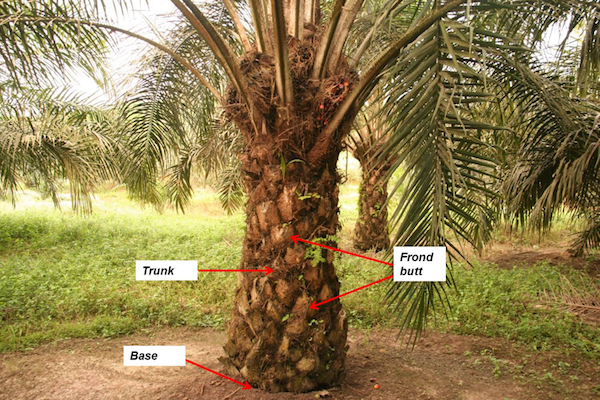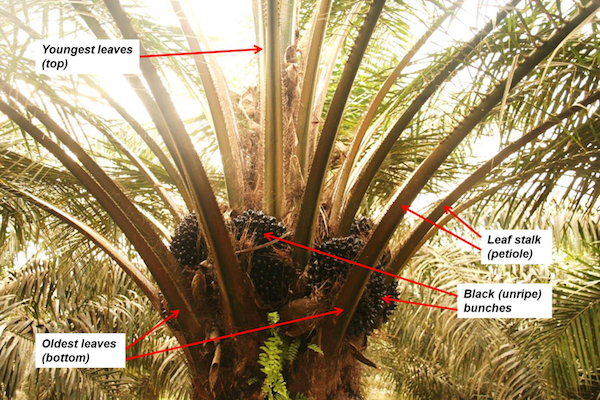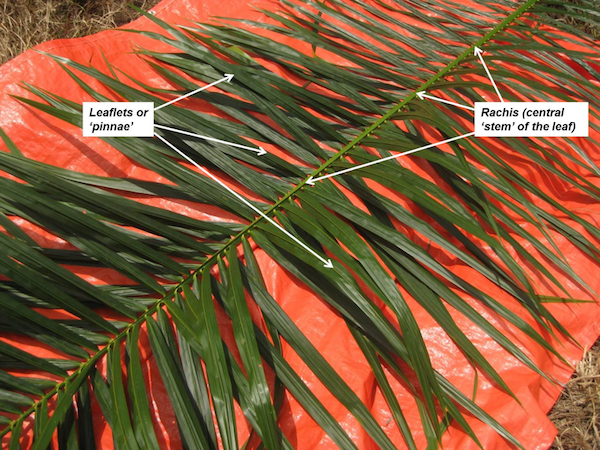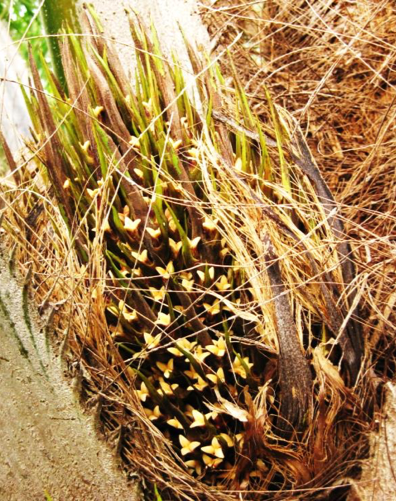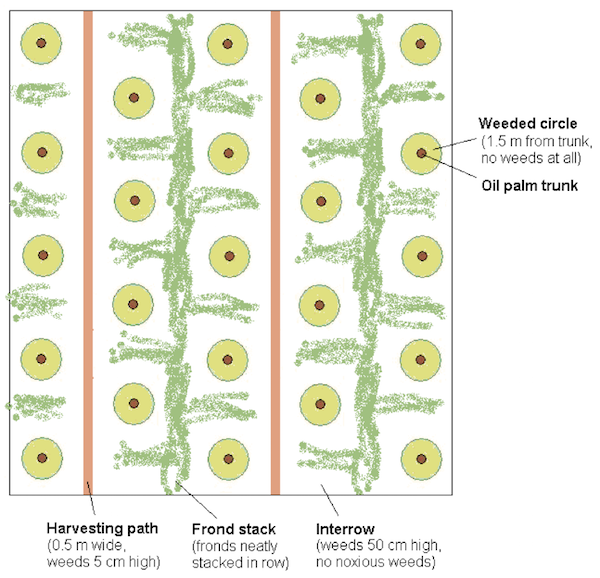Sustainable Oil Palm Farming / Important terms
| |
GOAL: To manage the plantation effectively, efficiently, and sustainably
Download: Module 3: Plantation Maintenance
Contents
- 1 In Figure 1 the following parts of the oil palm are indicated:
- 2 The following parts of the oil palm are indicated:
- 3 The following parts of the oil palm are indicated:
- 4 A close-up of an oil palm leaf
- 5 Figure 5 shows a male inflorescence (left) and female inflorescence (right).
- 6 The most efficient plantation layout. The plantation is divided into the following areas:
- 7 Acknowledgements
In Figure 1 the following parts of the oil palm are indicated:
- The trunk
- The crown: all the leaves of the palm
- The leaves, also known as ‘fronds’ in the case of oil palm
- The young leaves: these appear from the growing point in the centre of the top of the trunk
- The old leaves: these are found at the bottom of the crown
The following parts of the oil palm are indicated:
- The trunk
- The base: the part of the trunk that is closest to the ground. The roots grow from the bottom of the trunk base.
- The frond butts: these are pieces of leaves that remain behind after the leaves are cut during pruning or harvesting. When the palm grows older, the frond butts usually detach from the trunk, but this can take 10 to 15 years.
The following parts of the oil palm are indicated:
- The developing fruit bunches, also known as ‘black bunches’
- The oldest leaves
- The youngest leaves
- The petiole: the bottom part of the leaves, which has spines but no leaflets
A close-up of an oil palm leaf
The leaf is composed of a central rachis with leaflets, also known as ‘pinnae’, on either side. When collecting leaf samples (Appendix 1), usually both the rachis and the leaflets are collected. Note: some of the leaflets point a bit more upwards and others a bit more downwards. This is what gives oil palm leaves a ‘messy’ appearance, compared with for example coconut palm leaves, where the leaflets are all set in one single plane.
Figure 5 shows a male inflorescence (left) and female inflorescence (right).
|
|
The most efficient plantation layout. The plantation is divided into the following areas:
- The weeded circle, 1.5—2 meters in diameter, around the palm trunk
- The harvesting path, every other row
- The frond stack, in a U-shape around the palm, every other row alternating with the harvesting path
- The inter-row, which includes all the areas outside the weeded circle and the harvesting path
Acknowledgements
The material from Important terms is sourced from Smallholder Oil Palm Handbook, and put together by Lotte Suzanne Woittiez (Wageningen Universit) and Haryono Sadikin, Sri Turhina, Hidayat Dani, Tri Purba Dukan, and Hans Smit (SNV) in August 2016. See Module 3: Plantation Maintenance for more information.



